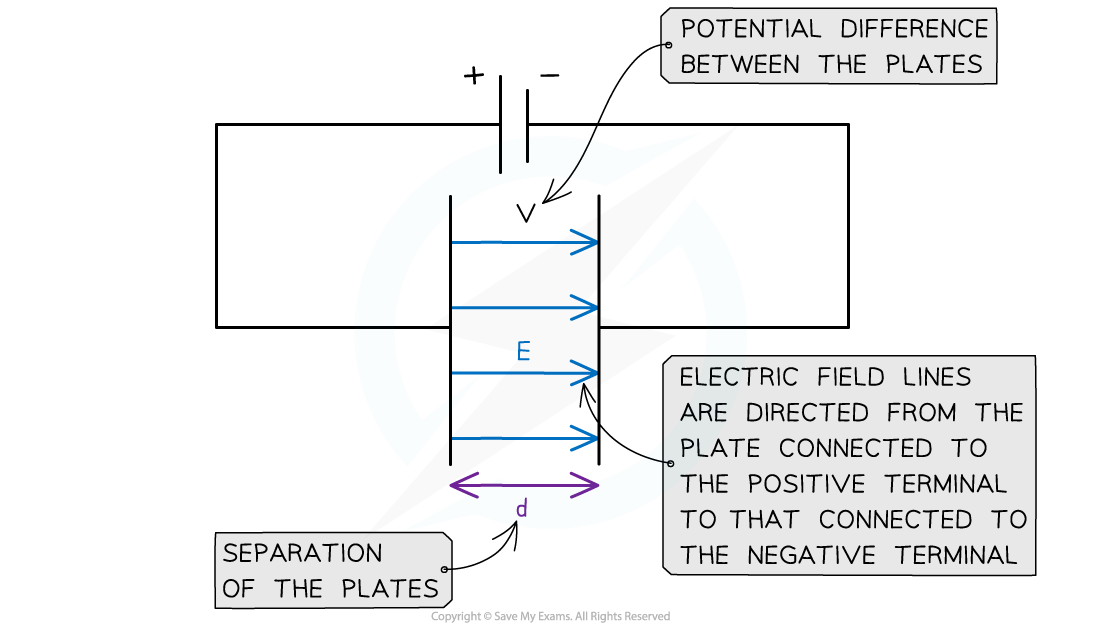Electric Field Between Parallel Plates (Cambridge (CIE) A Level Physics): Revision Note
Exam code: 9702
Electric field between parallel plates
When two points in an electric field are at different potentials, there is a potential difference between them
To move a charge across that potential difference, work needs to be done on the charge
Two charged parallel plates with a potential difference of V between them create a uniform electric field
The magnitude of the uniform electric field strength between two charged parallel plates is defined by the equation:
Where:
E = electric field strength (V m−1)
ΔV = potential difference between the plates (V)
Δd = distance between the plates (m)
Note: both units for electric field strength, V m−1 and N C−1, are equivalent
The equation shows:
the greater the potential difference between the plates, the stronger the field
the greater the separation between the plates, the weaker the field
This equation cannot be used to find the electric field strength around a point charge
This is because the field around a point charge is radial
The electric field between two plates is directed:
from the positive plate (i.e. the one connected to the positive terminal)
to the negative plate (i.e. the one connected to the negative terminal)
Uniform electric field between two parallel plates

The electric field strength between two charged parallel plates is the ratio of the potential difference and distance between the plates
Derivation of electric field strength between two parallel plates
When a charge q moves from one plate to the other, the work done on the charge by the field is
Where:
W = work done on charge (J)
F = force on the charge (N)
d = distance between plates (m)
The work done in moving a charge q through a potential difference V between parallel plates is given by:
Equating the two expressions:
The electric field strength between the plates is therefore given by:

The work done on a charge in an electric field depends on the force and the distance between the plates
Worked Example
Two parallel metal plates separated by 3.5 cm have a potential difference of 7.9 kV between them.
Calculate the electric force acting on a stationary point charge of 2.6 × 10−15 C when placed between the plates.
Answer:
Step 1: List the known quantities
Potential difference between plates, V = 7.9 kV = 7900 V
Distance between plates, d = 3.5 cm = 0.035 m
Charge, q = 2.6 × 10−15 C
Step 2: Equate the equations for electric field strength
E field between parallel plates:
E field on a point charge:
Step 3: Rearrange the expression for electric force F
Step 4: Substitute values to calculate the force on the point charge
N (2 s.f.)
Examiner Tips and Tricks
Remember the equation for electric field strength with V and d is only valid for parallel plates, and not for point charges
However, when a point charge moves between two parallel plates, the two equations for electric field strength can be equated:
Top tip: if one of the parallel plates is earthed, it has a voltage of 0 V

Unlock more, it's free!
Did this page help you?